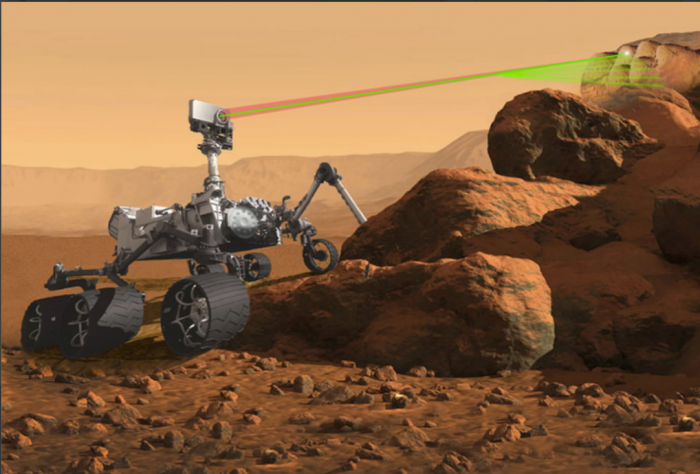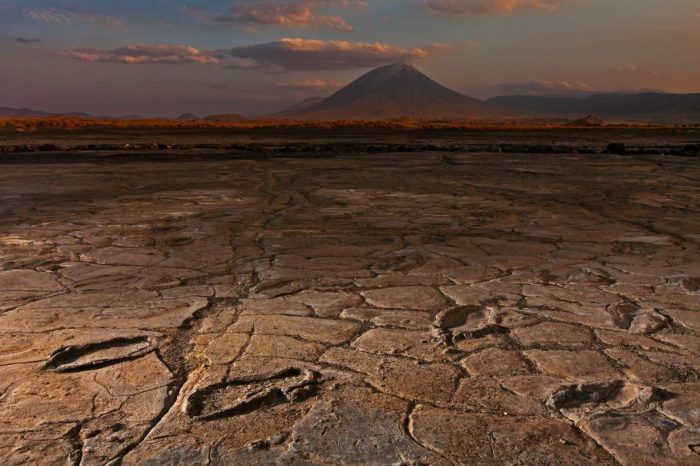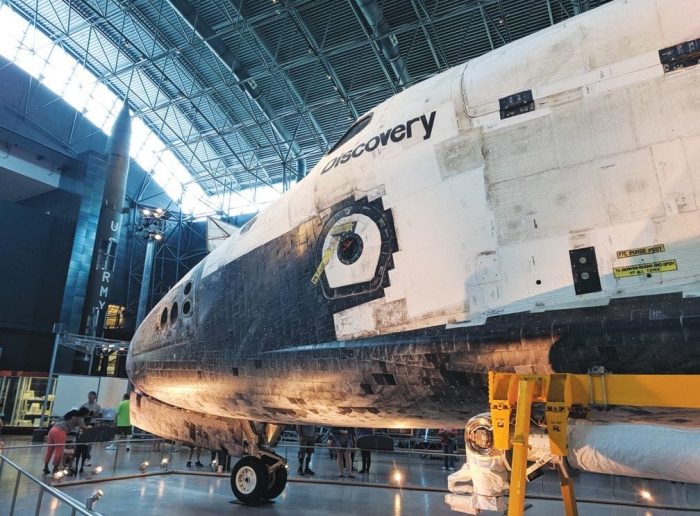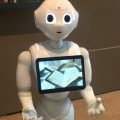ICYMI: Highlights from the week that was August 19 – August 25, 2018
No one can keep up with everything, so let us do it for you. We’ll gather the top Smithsonian stories from across the country and around the world each week so you’ll never be at a loss for conversation around the water cooler.
This week we followed in the footprints of the first nomadic humans as we considered when the first humans will set foot on Mars.

Of Presidents and Portraits
Forbes, August 21

President Barack Obama by Kehinde Wiley, National Portrait Gallery, Smithsonian Museum© KEHINDE WILEY
A recent trip to Washington, D.C., would have felt incomplete without a visit to the National Portrait Gallery to see the much-talked-about portrait of President Barack Obama by Kehinde Wiley in the recently renovated and reopened Hall of Presidents, as well as the portrait of Michelle Obama by Amy Sherald.
Apparently, I am not the only one to feel so, as a velvet-roped-off viewing area has been installed before each to accommodate the lines of people. This being the 21st century, the line is not so much to view the portraits but rather to turn your back to them so as to take a selfie. Yup. That’s just the way it is. And I confess I was not immune to the appeal of doing so. Read more from Tom Teicholz for Forbes.
Why We Can’t Depend on Robots to Find Life on Mars
Space.com, August 22

NASA’s Mars 2020 rover is designed to be able to identify potential traces of ancient life on Mars.
Credit: NASA
A Senate subcommittee asked for reasons to support sending humans to Mars, and, boy, did they get one from Ellen Stofan, NASA’s former chief scientist.
Stofan, who now leads the Smithsonian’s National Air and Space Museum, argued that if we truly want to find and understand any potential traces of ancient life on the Red Planet, robots can’t do it alone — we’ll need humans on the ground.
“While I’m optimistic that life did evolve on Mars, I’m not optimistic that it got very complex, so we’re talking about finding fossil microbes,” Stofan told a Senate subcommittee devoted to science issues on Aug. 1, adding that those fossils would be incredibly hard to find. Read more from Meghan Bartels for Space.com.
Treasure Trove of Fossil Human Footprints Is Vanishing
The ancient tracks at Engare Sero have stood the test of time, but they won’t last if left exposed to the elements.
National Geographic, August 21

A party of more than a dozen adults and adolescents left footprints in volcanic mud in Tanzania between 5,000 and 19,000 years ago.
PHOTOGRAPH BY ROBERT CLARK, NATIONAL GEOGRAPHIC CREATIVE
In the shadow of a volcano in northern Tanzania, a mudflat preserves a treasure trove of footprints laid down by modern humans between 5,000 and 19,000 years ago. There, two groups of men, women, and children walked through the area within hours to days of each other. Some of the tracks show joggers’ hurried impressions; other prints that are less than five inches long may well belong to infants.
“These are Homo sapiens—this is us, this is literally our history,” says Cynthia Liutkus-Pierce of Appalachian State University in North Carolina, the geologist who has led study of the site with support from the National Geographic Society.
But like other human footprint sites, these ancient tracks are at risk from erosion—and some have already vanished. Since they were first described in 2010, some of the faintest prints can no longer be distinguished from the mudflat’s surface. Read more from Michael Greshko for National Geographic.
Is the Smithsonian’s Udvar-Hazy Center the better Air and Space Museum?
The Washington Post, August 23

The space shuttle Discovery really got around during its 30 years of service. (Sadie Dingfelder/Express)
I wonder how many of the 7 million people who visit the National Air and Space Museum on the Mall each year know that there’s another, arguably better and definitely bigger Air and Space Museum just 26 miles away. The Steven F. Udvar-Hazy Center isn’t exactly a secret — it draws around 1.6 million visitors a year — but it could definitely handle more people. On a recent weekday, the center’s massive exhibit hall was only speckled with tourists, but they made up for their numbers with outsize enthusiasm.
“This airplane goes 2,000 miles per hour WITHOUT EVEN TRYING,” I overheard one preteen boy say to his family while standing next to the museum’s Lockheed SR-71 Blackbird. “It could go faster than any missile!” Read more from Sadie Dingfelder for The Washington Post Express.
ABC7 goes behind the scenes at the National Zoo’s panda house
WJLA Washington, August 23
Posted: 4 September 2018
-
Categories:
Air and Space Museum , Astrophysical Observatory , Portrait Gallery





